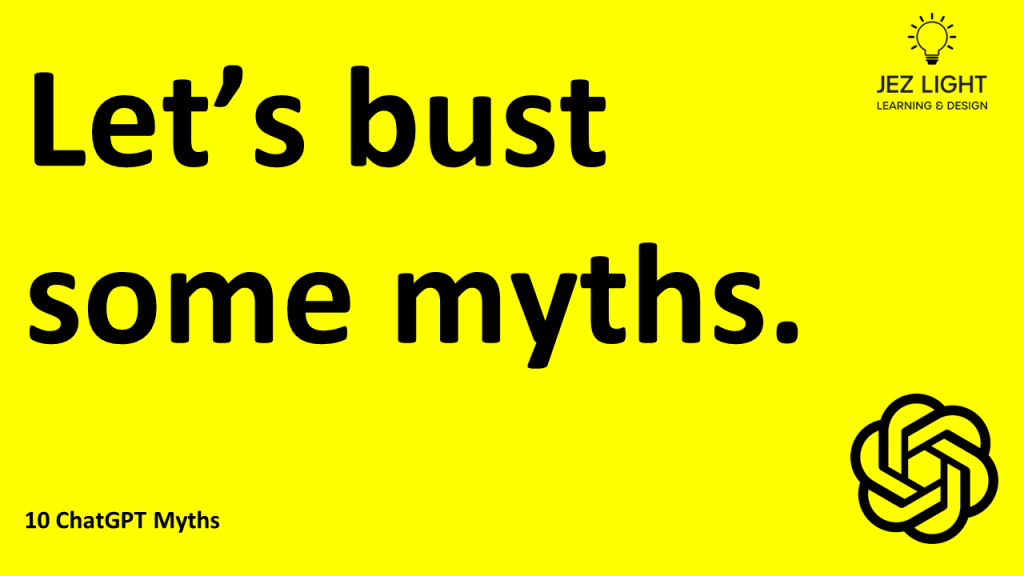Yep, it’s yet another ChatGPT blog post. 😒
Why?
We’re hearing people everywhere get very excited about the potential of this amazing tool, but we’re also starting to get a little nervous about what we’re not hearing.
For some, it comes with caution and understanding, and for others it might appear to be the golden nugget they’ve been waiting for. We thought we’d take the time to help by clarifying things a little, you know, just in case…
Here’s 10 myths about using ChatGPT we’d like to elaborate on:
- It knows everything and anything! While ChatGPT is a super powerful piece of tech, it also has limitations. It always relies on the data it was trained on and might not be up-to-date or have full knowledge on everything you ask. Top Tip – Don’t believe everything you read on the internet!
- It will replace human trainers! Our AI friend can most certainly assist in many aspects of learning and development, but do not fear, it’s never going to be able to fully replace human expertise, empathy, and adaptability in complex learning scenarios. Top Tip – Make friends with it, don’t fear it.
- It’s 100% accurate! Erm. Hard NO! This clever tool generates responses based on patterns learned from data. That sometimes means it can produce incorrect or nonsensical answers, so it’s always going to need a useful human and come common sense to check it over. Top Tip – Never trust data solely from ChatGPT – Do some checking elsewhere.
- Context is perfectly understood. Just like humans, this is another no. While it’s clever enough to consider previous messages, it may still struggle with context, and that means you might get misunderstandings or irrelevant responses. Top Tip – Use brilliant prompts and always sense check your results.
- It has emotions and it’s own consciousness. Thankfully this one is also not true…I mean have you even seen Terminator? It’s simply an advanced algorithm designed to generate human-like text based on patterns and probabilities. Top Tip – Do not read emotion or a conscience into the answers you get. It doesn’t exist.
- It is an unbiased source of information. Big, fat, no. When ChatGPT was created it was trained on large datasets, which very likely will contain biases present in that data as it is collated from years gone by. Top Tip – Always apply 2023 logic and sensibilities to any data you get from it.
- It’s a cheap way to get legal advice. Yeah, maybe, if you want to end up in handcuffs! Once again, this is simply a clever software system that absolutely cannot be relied upon for legal advice. Top Tip – Just get a solicitor.
- It understands good & bad. It thinks it can, but it can’t. While efforts have been made to make ChatGPT robust, it is still susceptible to the input of inappropriate or harmful information. Sadly, there’s a lot of harmful stuff on the web for it to read. Top Tip – Check for bias in every form if you use the data.
- It perfectly understands your intent. This one is also false. It may misinterpret your intent or simply fail to grasp the underlying meaning of a question you ask. This can lead to irrelevant or just flat wrong responses. Top Tip – Get smart with your prompts.
- It’s going to replace human creativity! While it can generate text, (and other forms can make images and videos and that list keeps building) what it actually lacks is true creativity, originality, quirks, style and in the end, human intuition. Top Tip – Use it, have fun but always always sprinkle your ‘human-ness’ on it afterwards.
In summary, ChatGPT is an incredible resource when used correctly and checked by a human. Without that, you’re risking too much. Embrace the tech, but play responsibly!

